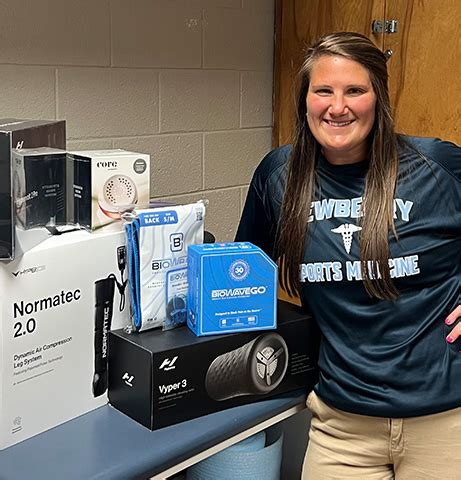Introduction
Aspiring athletic trainers who seek to make a mark in the competitive field of sports medicine need to equip themselves with the best possible education. This comprehensive guide will delve into the top schools for athletic training, providing valuable insights to help you make an informed decision about your future.

Factors to Consider
When selecting a school for athletic training, several key factors come into play:
- Accreditation: Schools with accreditation from the Commission on Accreditation of Athletic Training Education (CAATE) meet rigorous standards and ensure your program meets national guidelines.
- Faculty Expertise: Look for schools with faculty members who are licensed athletic trainers with extensive clinical experience and research accomplishments.
- Clinical Experiences: A robust clinical experience program is crucial for developing your practical skills. Seek schools that offer diverse clinical rotations in a range of athletic settings.
- Research Opportunities: Engage with schools that emphasize research and provide opportunities for students to participate in innovative projects.
- Career Services: Schools with dedicated career services offices can assist you in securing internships, finding employment, and advancing your professional goals.
Top Schools for Athletic Training
Based on these criteria, here is a comprehensive list of the top schools for athletic training:
| Rank | University | Location | Accreditation |
|---|---|---|---|
| 1 | University of Pittsburgh | Pittsburgh, PA | CAATE |
| 2 | University of North Carolina at Chapel Hill | Chapel Hill, NC | CAATE |
| 3 | Ohio State University | Columbus, OH | CAATE |
| 4 | University of Florida | Gainesville, FL | CAATE |
| 5 | University of Georgia | Athens, GA | CAATE |
| 6 | Michigan State University | East Lansing, MI | CAATE |
| 7 | University of Iowa | Iowa City, IA | CAATE |
| 8 | University of Southern California | Los Angeles, CA | CAATE |
| 9 | University of Kentucky | Lexington, KY | CAATE |
| 10 | Pennsylvania State University | University Park, PA | CAATE |
Program Structure and Curriculum
Athletic training programs typically span four years and culminate in a Bachelor of Science degree. The curriculum covers a wide range of topics, including:
- Anatomical Sciences: Study the structure and function of the human body
- Biomechanics: Analyze human movement and how it affects performance
- Pathophysiology: Understand the causes, symptoms, and treatment of injuries
- Clinical Assessment and Diagnosis: Learn techniques for evaluating and diagnosing athletic injuries
- Rehabilitation and Treatment: Develop skills for rehabilitating and treating injured athletes
Career Prospects for Athletic Trainers
Athletic trainers are in high demand, working in various settings such as:
- Sports Teams: Provide medical care to professional, collegiate, and high school athletes
- Fitness Centers: Help athletes improve their performance and prevent injuries
- Healthcare Facilities: Collaborate with physicians and other healthcare professionals in patient care
- Occupational Health: Assist workers in preventing and recovering from work-related injuries
According to the Bureau of Labor Statistics, the median annual salary for athletic trainers was $48,580 in May 2020. The job outlook for athletic trainers is projected to grow by 20% from 2020 to 2030, much faster than the average for all occupations.
Common Mistakes to Avoid
- Not considering accreditation: Ensure that the school you choose is CAATE-accredited and meets high standards.
- Ignoring faculty expertise: Look for schools with experienced and accomplished faculty members who can provide valuable guidance and mentorship.
- Underestimating clinical experiences: Prioritize schools that offer a comprehensive clinical program with hands-on training in real-world settings.
- Neglecting research opportunities: Engage with schools that encourage research and provide opportunities for students to contribute to the advancement of the field.
- Overlooking career services: Explore schools with dedicated career services offices that can support your job search and career development.
FAQs
1. What are the prerequisites for applying to an athletic training program?
- Typically, a high school diploma or equivalent and a strong academic record in math, science, and English are required.
2. How long does it take to complete an athletic training program?
- Most athletic training programs last four years and culminate in a Bachelor of Science degree.
3. What is the CAATE accreditation process?
- CAATE evaluates athletic training programs to ensure they meet rigorous standards in kurikulum, faculty qualifications, clinical experiences, and research opportunities.
4. What are the career prospects for athletic trainers?
- Athletic trainers are in high demand, working in various settings such as sports teams, fitness centers, healthcare facilities, and occupational health.
5. How can I prepare for a career in athletic training?
- Maintain a healthy lifestyle, participate in sports or physical activities, and volunteer in athletic training settings.
6. What are the differences between athletic trainers and physical therapists?
- Athletic trainers primarily focus on the prevention and treatment of injuries in athletes, while physical therapists work with a broader range of patients to restore movement and function.
7. What qualities are important for a successful athletic trainer?
- Strong communication and interpersonal skills, empathy, critical thinking, and a passion for helping others.
8. What is the job outlook for athletic trainers?
- The job outlook for athletic trainers is projected to grow by 20% from 2020 to 2030, much faster than the average for all occupations.
